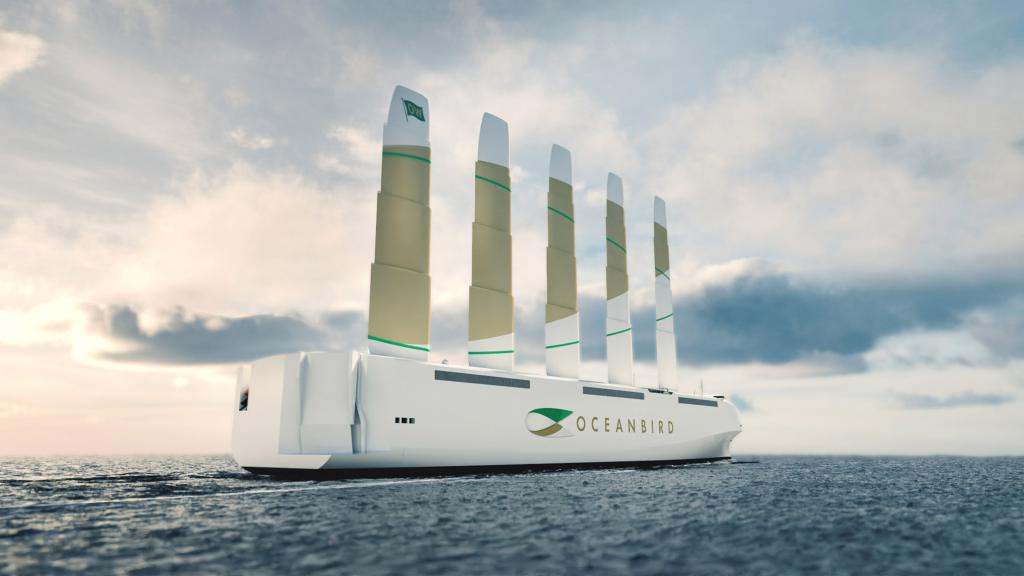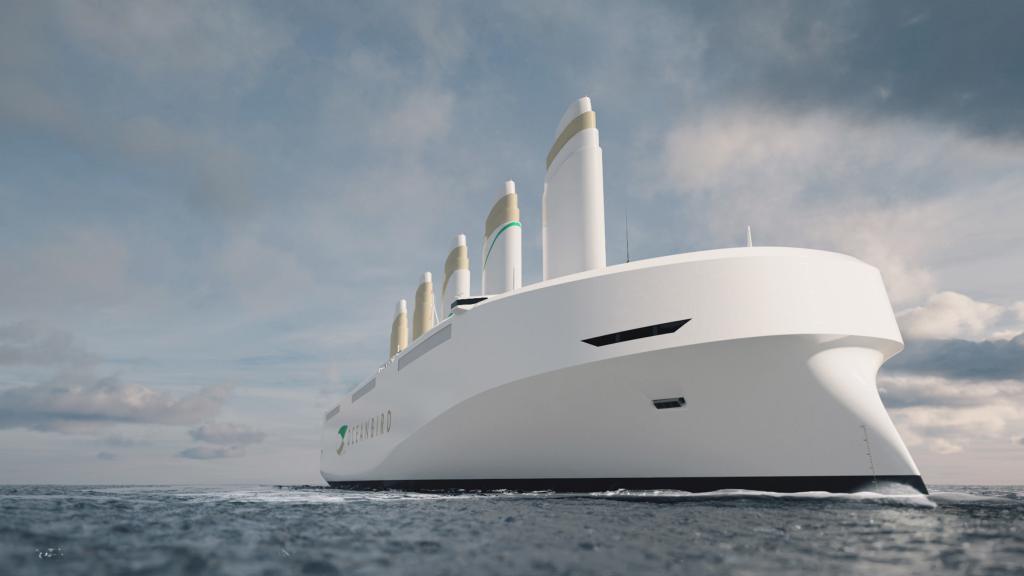Maritime transport is one of the main things responsible for pollution on the planet. In 2018, this industry emitted 937 million tons of CO2, more than all of Germany. If it were a country, the sector would be the sixth-largest emitter in the world, behind only Japan. That’s why transportation alternatives have been on the table for years. The last one is Oceanbird. A freighter capable of moving with the wind force and promises to offer a more sustainable way of moving goods around the planet.

It is a concept developed by the Swedish shipping company Wallenius Marine, designing a ship capable of transporting 7,000 cars across the Atlantic powered solely by the wind. A large sailboat, equipped with a body twice the height of a similar model thanks to the five 80 meter high sails that protrude from its hull.
These would make it the world’s largest wind-powered ship capable of traveling across the ocean to Europe to the United States in 12 days, with 10 knots. According to its promoters, a figure is only four days longer than a model equipped with combustion engines. Still, it would be able to complete with a much lower operating cost and, of course, with little environmental impact.
One of the keys to this design is its candles. To try to increase its speed, the Oceanbird would use wing sails instead of traditional cloth sails. These resemble solid fins made of steel and various compounds, just like the wings of an airplane, but with the difference in being symmetrical to lift whether the wind enters from the port or starboard tack. Wings can rotate 360 degrees to optimize the angle, depending on the wind’s direction concerning the boat. Something that you can also do automatically to maximize utilization and again stay on course.
Also, these nautical wings are telescopic, reaching their highest point up to 105 meters in altitude. Still, they can be folded up to 60 meters to pass under bridges and mitigate the turbulence caused by strong winds. A ship is equipped with an auxiliary propulsion system. They have not indicated what technology will use, limiting itself to suggesting that it will complete the ports’ maneuvers and be clean.

